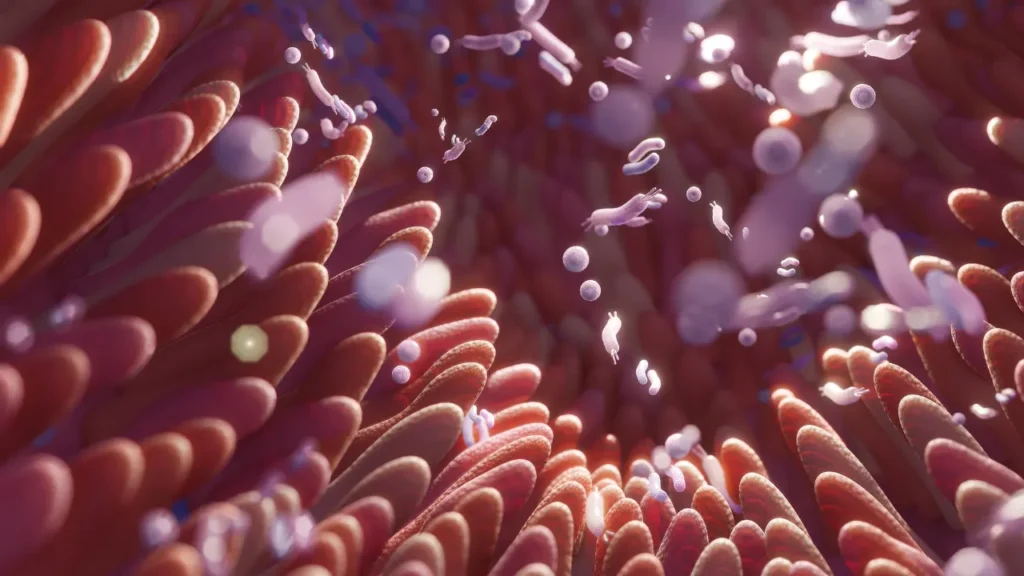The unusual, non-pathogenic yeast Saccharomyces boulardii has gained popularity in the probiotics industry because of its health benefits, especially for the gastrointestinal tract. However, through the gut-brain axis, its possible impacts on cognition, alertness, and focus have also started to attract the attention of researchers and health-conscious people. This article aims to examine Saccharomyces boulardii’s nature, health benefits, ideal dosage, side effects, possible drug interactions, and responsible use, with a focus on cognitive enhancement.
You May Also Like:
Xylitol: Benefits, Dosage, Side Effects, Drug Interactions, And Other Important Information
Xanthan Gum: Benefits, Dosage, Side Effects, Drug Interactions, And Other Important Information
Saccharomyces Boulardii: Benefits, Dosage, Side Effects, Drug Interactions, and Other Important Information is an original (NootropicsPlanet) article.
Nature of Saccharomyces Boulardii
French scientist Henri Boulard initially identified the tropical strain of yeast Saccharomyces boulardii from lychee and mangosteen fruit in 1923. Although it has different genetic, biochemical, and physiological characteristics from Saccharomyces cerevisiae, the baker’s yeast, it is closely linked to it. S. boulardii, in contrast to S. cerevisiae, is well-known for its resilient capacity to withstand gastric acidity, fend off antibiotics, and momentarily colonize the human gastrointestinal tract.
Health Benefits of Saccharomyces Boulardii
The numerous health advantages of S. boulardii are mostly related to its probiotic properties in the digestive tract. It has been shown to be beneficial in managing and avoiding several diarrhea types, such as traveler’s diarrhea, diarrhea brought on by antibiotics, and infections caused by Clostridium difficile. To achieve these effects, it modulates both local and systemic immune responses, inhibits the adherence of harmful bacteria to the intestinal mucosa, and affects the function of the intestinal barrier.
Recent research indicates that S. boulardii may potentially affect mental health and cognitive abilities by acting on the gut-brain axis. Thanks to this bidirectional communication mechanism, the gut bacteria can communicate with the brain in both directions, which may impact mood, stress reactions, and cognitive functions.
Although direct evidence linking S. boulardii to enhanced alertness, focus, and cognition is still in its infancy, the yeast’s ability to modulate the gut microbiome suggests a promising avenue for research.

Chemistry of Saccharomyces Boulardii
The chemistry of Saccharomyces boulardii is pivotal to its functionality and health benefits, particularly its interaction with the human body. Unlike typical pharmacological agents with a single active molecule, S. boulardii operates through a complex consortium of bioactive substances that it secretes or induces the body to produce. These include:
- Polyamines: Polyamines such as spermine and spermidine are known to play roles in cellular growth and differentiation. They may help repair the intestinal lining and modulate the immune response.
- Short-chain Fatty Acids (SCFAs): Produced by the fermentation of dietary fibers by S. boulardii and other gut microbiota, SCFAs like butyrate, acetate, and propionate serve as energy sources for colonocytes, strengthen the intestinal barrier, and possess anti-inflammatory properties.
- Proteases: S. boulardii secretes proteases that can degrade toxins from pathogenic bacteria, reducing their ability to bind to the intestinal epithelium and causing disease.
- Signaling Molecules: It can influence the production of signaling molecules, including cytokines, which are critical for modulating the immune response and maintaining the balance between pro-inflammatory and anti-inflammatory signals.
This intricate biochemical activity supports the therapeutic effects of S. boulardii by affecting immunity, gut health, and maybe the gut-brain axis, which affects mental health and cognition.
Physiological Mechanism of Action
The physiological impacts of Saccharomyces boulardii are as multifaceted as its chemistry, affecting the body through several mechanisms:
- Gut Barrier Integrity: S. boulardii strengthens the intestinal barrier by increasing the expression of tight junction proteins. This reduces the gut’s permeability, preventing the translocation of harmful substances and bacteria into the bloodstream,. This could trigger systemic inflammation potentially affecting the brain and cognitive functions.
- Modulation of Gut Microbiota: By competing with pathogenic bacteria for nutrients and adhesion sites, S. boulardii helps maintain a healthy balance of gut microbiota. This competition can also stimulate the growth of beneficial bacteria, contributing to a diverse and resilient gut ecosystem.
- Immune System Interaction: S. boulardii modulates the immune response by interacting with dendritic cells, macrophages, and various cytokines. It can promote a shift towards anti-inflammatory responses while enhancing the gut’s ability to respond to pathogenic challenges, thus maintaining immune homeostasis.
- Neurotransmitter Production: The gut microbiota, influenced by S. boulardii, can produce neurotransmitter-like substances, including gamma-aminobutyric acid (GABA) and serotonin. These substances can impact mood, anxiety, and cognitive functions by signaling through the gut-brain axis.
- Anti-toxigenic Effects: By secreting proteases that degrade bacterial toxins and neutralizing their effects, S. boulardii can prevent damage to intestinal cells and systemic impact that might result from toxin exposure.
Using these methods, S. boulardii has a significant impact on the gastrointestinal tract, potentially affecting mental health and cognitive abilities through the gut-brain axis. Its effects range from the cellular level, where it influences immunological responses and cell communication, to the whole organism, which affects the gut microbiota’s composition and functionality. Further investigation into the precise effects of S. boulardii on the brain and behavior is imperative, as this comprehensive method of action highlights the supplement’s promise for both gut health and cognitive enhancement.

Optimal Dosage of Saccharomyces Boulardii
The best S. boulardii dosage varies according to the ailment being prevented or treated. Doses of 250–500 milligrams administered once or twice daily have been frequently suggested and researched for gastrointestinal issues. However, there isn’t much data on the proper dosage for advantages to the nervous system or cognition, so further research is needed to determine the best dosing schedules for these uses.
Side Effects of Saccharomyces Boulardii
For most people, S. boulardii is generally considered harmless; adverse effects are uncommon and usually moderate when they occur. The most typical adverse effects include constipation, bloating, and gas. However, there is a risk of fungemia, a dangerous illness where yeast enters the circulation, in people with a central venous catheter or immunocompromised.
Potential Substance Interactions with Saccharomyces Boulardii
Although S. boulardii is resistant to most antibiotics, suggesting that it can be used in addition to these therapies without losing effectiveness, it is essential to consider antifungal medication interactions. Due to its fungal origin, antifungal drugs may possibly reduce its effectiveness or eliminate it entirely from the gastrointestinal system. To properly handle this potential interaction, patients considering taking S. boulardii supplements and antifungal medicines should speak with healthcare specialists.

Best Responsible Uses of Saccharomyces Boulardii
Considering the current state of research, people interested in utilizing S. boulardii to improve cognition should proceed with caution and incorporate it into a larger dietary and lifestyle plan to improve gut health. Foundational elements should include regular physical activity, a balanced diet high in fiber and fermented foods, and adequate hydration. Supplementing with S. boulardii can be done under the supervision of medical professionals.
Saccharomyces Boulardii:
Conclusion
S. boulardii is a probiotic yeast strain with well-documented health benefits, particularly in promoting gastrointestinal health, supporting immune function, and preventing and managing various forms of diarrhea. Emerging research suggests that S. boulardii may have additional health benefits beyond gastrointestinal health, such as reducing the risk of urinary tract infections, preventing the recurrence of certain infections, and alleviating symptoms of allergies and skin conditions.
However, more studies are needed to confirm these effects and elucidate the underlying mechanisms. Its safety profile and efficacy make it a valuable option for individuals seeking natural approaches to improve digestive health and overall well-being. However, it’s essential to use S. boulardii under the guidance of a healthcare professional, especially for individuals with underlying health conditions or compromised immune systems.

References:
- Saccharomyces Boulardii – Uses, Side Effects, and More. Retrieved from:https://www.webmd.com/vitamins/ai/ingredientmono-332/saccharomyces-boulardii
- Efficacy and safety of the probiotic Saccharomyces boulardii for the prevention and therapy of gastrointestinal disorders. Retrieved from: https://www.ncbi.nlm.nih.gov/pmc/articles/PMC3296087/
- What Is Saccharomyces Boulardii? Retrieved from: https://www.verywellhealth.com/the-benefits-of-saccharomyces-boulardii-89509
- Saccharomyces boulardii: What Makes It Tick as Successful Probiotic? Retrieved from: https://www.ncbi.nlm.nih.gov/pmc/articles/PMC7344949/
Important Note: The information contained in this article is for general informational purposes only, and should not be construed as health or medical advice, nor is it intended to diagnose, prevent, treat, or cure any disease or health condition. Before embarking on any diet, fitness regimen, or program of nutritional supplementation, it is advisable to consult your healthcare professional in order to determine its safety and probable efficacy in terms of your individual state of health.
Regarding Nutritional Supplements Or Other Non-Prescription Health Products: If any nutritional supplements or other non-prescription health products are mentioned in the foregoing article, any claims or statements made about them have not been evaluated by the U.S. Food and Drug Administration, and such nutritional supplements or other health products are not intended to diagnose, treat, cure, or prevent any disease.


